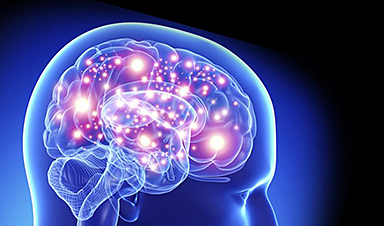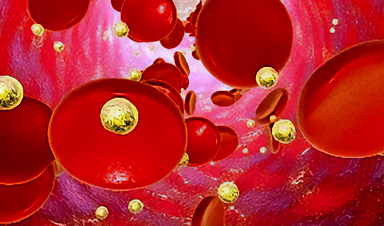| Universitat Autònoma de Barcelona (UAB) researchers have developed a magnetic material capable of imitating the way the brain stores information. The material makes it possible to emulate the synapses of neurons and mimic, for the first time, the learning that occurs during deep sleep. | |
| Neuromorphic computing is a new computing paradigm in which the behavior of the brain is emulated by mimicking the main synaptic functions of neurons. Among these functions is neuronal plasticity: the ability to store information or forget it depending on the duration and repetition of the electrical impulses that stimulate neurons, a plasticity that would be linked to learning and memory. | |
| Among the materials that mimic neuron synapses, memresistive materials, ferroelectrics, phase change memory materials, topological insulators and, more recently, magneto-ionic materials stand out. In the latter, changes in the magnetic properties are induced by the displacement of ions within the material caused by the application of an electric field. | |
| In these materials it is well known how the magnetism is modulated when applying the electric field, but the evolution of magnetic properties when voltage is stopped (that is, the evolution after the stimulus) is difficult to control. This makes it complicated to emulate some brain-inspired functions, such as maintaining the efficiency of learning that takes place even while the brain is in a state of deep sleep (i.e., without external stimulation). | |
| This study (Materials Horizons, “Frequency-dependent stimulated and post-stimulated voltage control of magnetism in transition metal nitrides: towards brain-inspired magneto-ionics”), led by researchers from the UAB Department of Physics Jordi Sort and Enric Menéndez, in collaboration with the ALBA Synchrotron, the Catalan Institute of Nanoscience and Nanotechnology (ICN2) and the ICMAB, proposes a new way of controlling the evolution of magnetization both in the stimulated and in the post-stimulus states. | |
| The researchers have developed a material based on a thin layer of cobalt mononitride (CoN) where, by applying an electric field, the accumulation of N ions at the interface between the layer and a liquid electrolyte in which the layer has been placed can be controlled. | |
| “The new material works with the movement of ions controlled by electrical voltage, in a manner analogous to our brain, and at speeds similar to those produced in neurons, of the order of milliseconds,” explain ICREA research professor Jordi Sort and Serra Húnter Tenure-track Professor Enric Menéndez. “We have developed an artificial synapse that in the future may be the basis of a new computing paradigm, alternative to the one used by current computers”, Sort and Menéndez point out. | |
| By applying voltage pulses, it has been possible to emulate, in a controlled way, processes such as memory, information processing, information retrieval and, for the first time, the controlled updating of information without applied voltage. This control has been achieved by modifying the thickness of the cobalt mononitride layers (which determines the speed of the ions motion), and the frequency of the pulses. | |
| The arrangement of the material allows the magnetoionic properties to be controlled not only when the voltage is applied but also, for the first time, when the voltage is removed. Once the external voltage stimulus disappears, the magnetization of the system can be reduced or increased, depending on the thickness of the material and the protocol how the voltage has been previously applied. | |
| This new effect opens a whole range of opportunities for new neuromorphic computing functions. It offers a new logic function that allows, for example, the possibility of mimicking the neural learning that occurs after brain stimulation, when we sleep profoundly. This functionality cannot be emulated by any other type of existing neuromorphic materials. | |
| “When the thickness of the cobalt mononitride layer is below 50 nanometers and with a voltage applied at a frequency greater than 100 cycles per second, we have managed to emulate an additional logic function: once the voltage is applied, the device can be programmed to learn or to forget, without the need for any additional input of energy, mimicking the synaptic functions that take place in the brain during deep sleep, when information processing can continue without applying any external signal”, highlight Jordi Sort and Enric Menendez. |
News
Nanocrystals Carrying Radioisotopes Offer New Hope for Cancer Treatment
The Science Scientists have developed tiny nanocrystal particles made up of isotopes of the elements lanthanum, vanadium, and oxygen for use in treating cancer. These crystals are smaller than many microbes and can carry isotopes of [...]
New Once-a-Week Shot Promises Life-Changing Relief for Parkinson’s Patients
A once-a-week shot from Australian scientists could spare people with Parkinson’s the grind of taking pills several times a day. The tiny, biodegradable gel sits under the skin and releases steady doses of two [...]
Weekly injectable drug offers hope for Parkinson’s patients
A new weekly injectable drug could transform the lives of more than eight million people living with Parkinson's disease, potentially replacing the need for multiple daily tablets. Scientists from the University of South Australia [...]
Most Plastic in the Ocean Is Invisible—And Deadly
Nanoplastics—particles smaller than a human hair—can pass through cell walls and enter the food web. New research suggest 27 million metric tons of nanoplastics are spread across just the top layer of the North [...]
Repurposed drugs could calm the immune system’s response to nanomedicine
An international study led by researchers at the University of Colorado Anschutz Medical Campus has identified a promising strategy to enhance the safety of nanomedicines, advanced therapies often used in cancer and vaccine treatments, [...]
Nano-Enhanced Hydrogel Strategies for Cartilage Repair
A recent article in Engineering describes the development of a protein-based nanocomposite hydrogel designed to deliver two therapeutic agents—dexamethasone (Dex) and kartogenin (KGN)—to support cartilage repair. The hydrogel is engineered to modulate immune responses and promote [...]
New Cancer Drug Blocks Tumors Without Debilitating Side Effects
A new drug targets RAS-PI3Kα pathways without harmful side effects. It was developed using high-performance computing and AI. A new cancer drug candidate, developed through a collaboration between Lawrence Livermore National Laboratory (LLNL), BridgeBio Oncology [...]
Scientists Are Pretty Close to Replicating the First Thing That Ever Lived
For 400 million years, a leading hypothesis claims, Earth was an “RNA World,” meaning that life must’ve first replicated from RNA before the arrival of proteins and DNA. Unfortunately, scientists have failed to find [...]
Why ‘Peniaphobia’ Is Exploding Among Young People (And Why We Should Be Concerned)
An insidious illness is taking hold among a growing proportion of young people. Little known to the general public, peniaphobia—the fear of becoming poor—is gaining ground among teens and young adults. Discover the causes [...]
Team finds flawed data in recent study relevant to coronavirus antiviral development
The COVID pandemic illustrated how urgently we need antiviral medications capable of treating coronavirus infections. To aid this effort, researchers quickly homed in on part of SARS-CoV-2's molecular structure known as the NiRAN domain—an [...]
Drug-Coated Neural Implants Reduce Immune Rejection
Summary: A new study shows that coating neural prosthetic implants with the anti-inflammatory drug dexamethasone helps reduce the body’s immune response and scar tissue formation. This strategy enhances the long-term performance and stability of electrodes [...]
Scientists discover cancer-fighting bacteria that ‘soak up’ forever chemicals in the body
A family of healthy bacteria may help 'soak up' toxic forever chemicals in the body, warding off their cancerous effects. Forever chemicals, also known as PFAS (per- and polyfluoroalkyl substances), are toxic chemicals that [...]
Johns Hopkins Researchers Uncover a New Way To Kill Cancer Cells
A new study reveals that blocking ribosomal RNA production rewires cancer cell behavior and could help treat genetically unstable tumors. Researchers at the Johns Hopkins Kimmel Cancer Center and the Department of Radiation Oncology and Molecular [...]
AI matches doctors in mapping lung tumors for radiation therapy
In radiation therapy, precision can save lives. Oncologists must carefully map the size and location of a tumor before delivering high-dose radiation to destroy cancer cells while sparing healthy tissue. But this process, called [...]
Scientists Finally “See” Key Protein That Controls Inflammation
Researchers used advanced microscopy to uncover important protein structures. For the first time, two important protein structures in the human body are being visualized, thanks in part to cutting-edge technology at the University of [...]
AI tool detects 9 types of dementia from a single brain scan
Mayo Clinic researchers have developed a new artificial intelligence (AI) tool that helps clinicians identify brain activity patterns linked to nine types of dementia, including Alzheimer's disease, using a single, widely available scan—a transformative [...]





















